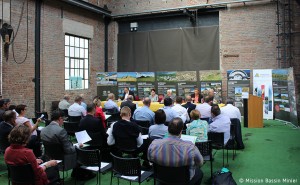Governance to manage the label

The World Heritage Mining Basin Territorial Conference
The Territorial Conference is the political body managing the listed sites across the board, chaired jointly by the Regional Prefect and the Chair of the Nord-Pas de Calais Regional Council. It supervises the overall direction of Management plan and coordinates stakeholders. It comprises the Chairs of both general councils, the Chairs of the Inter-municipality organisations and the Mayors of towns within the listed sites and the buffer zone. It meets once a year.
Local World Heritage Mining Basin committees
Four Local World Heritage committees were set up at arrondissement level (for the Béthune, Lens, Douai, Valenciennes areas) to meet Listed Property towns’ stated need to discuss and exchange information. Each agglomeration designated a “UNESCO” policy reporter in charge of leading these local committees alongside the sub-prefects.
The Mining Basin Mission

Founded in May 2000 to support the reconversion of the Mining Basin after the mines closed, the “Nord-Pas de Calais Mining Basin Mission” is made up of architects, urban specialists and historians serving local authorities which wish to plan and develop their territory. Working with BMU, the Mining Basin Mission put together the candidature throughout the inscription procedure. Since 2012, the Mission Nord-Pas de Calais Mining Basin has been in charge of handling “World Heritage” status alongside the government. Funded by the state, region, Nord and Pas-de-Calais départements and inter-municipality organisations in the Mining Basin, its job is to protect and promote the heritage, as well as implementing a programme of actions to sustain this label. This involves disseminating knowledge of heritage, promoting the territory, participating in drawing up tourism strategies for leverage the listed sites etc. A Technical Committee involving the Mining Basin Mission and government departments meets once a month to deal with ongoing site management.


